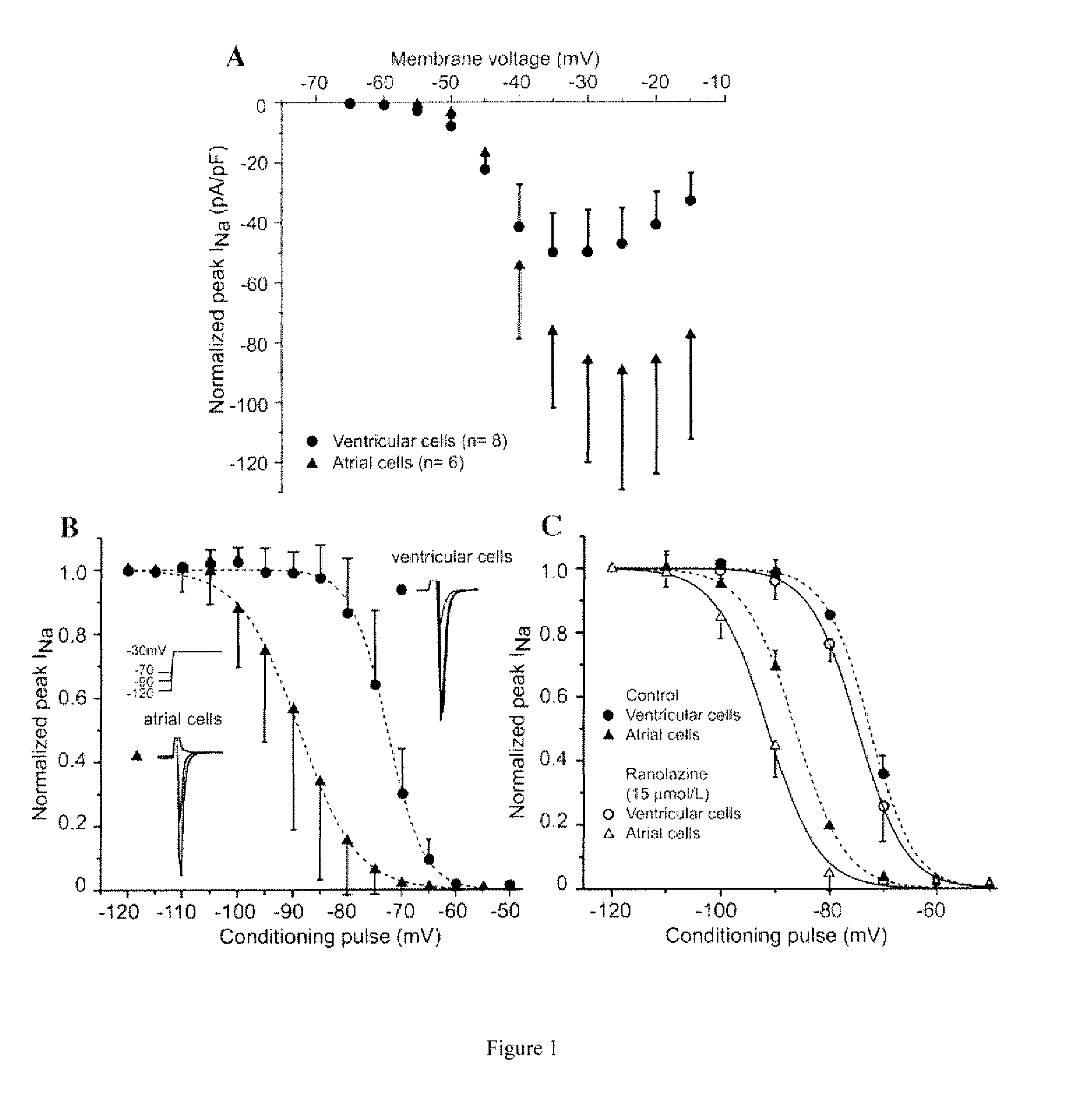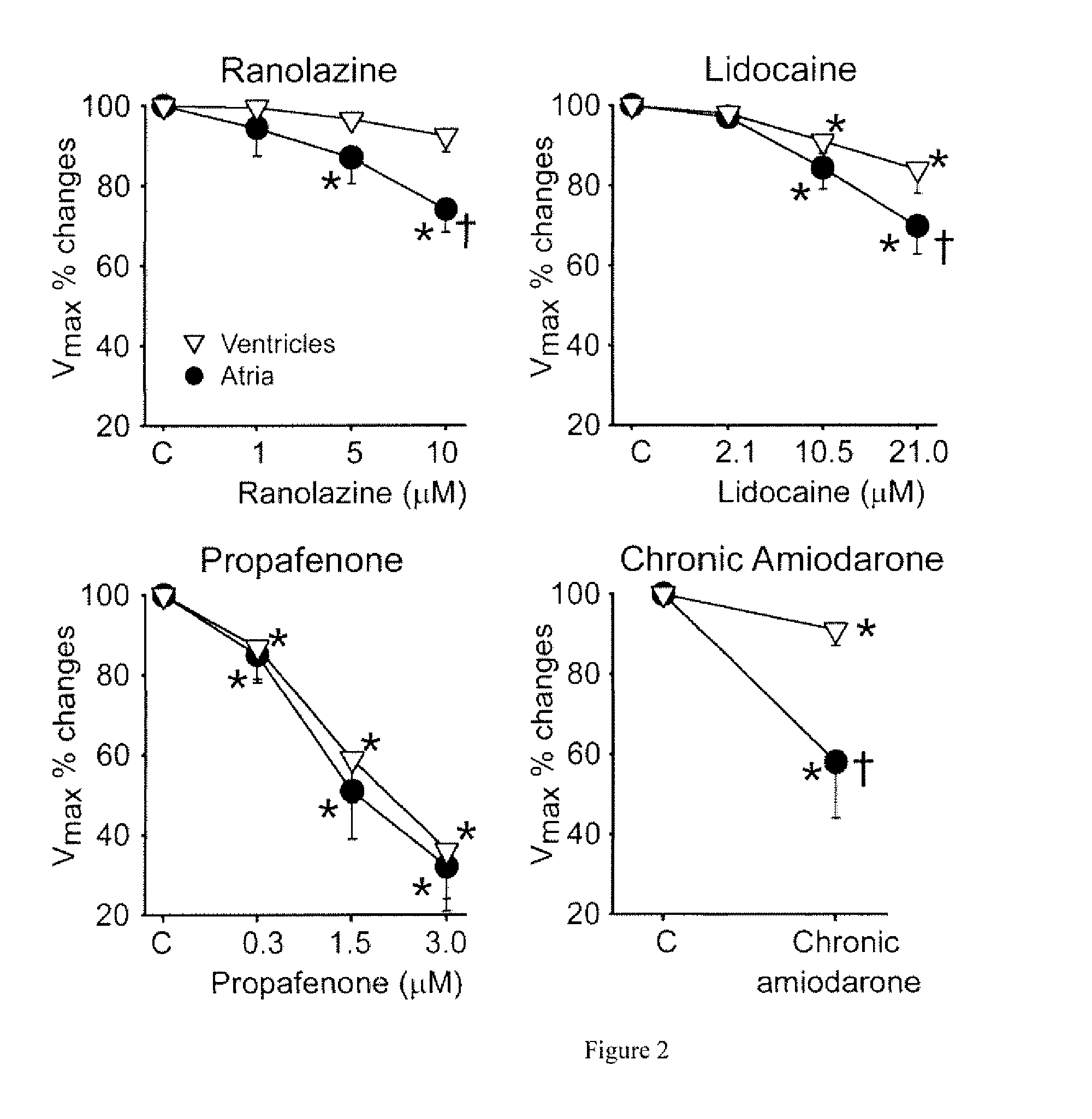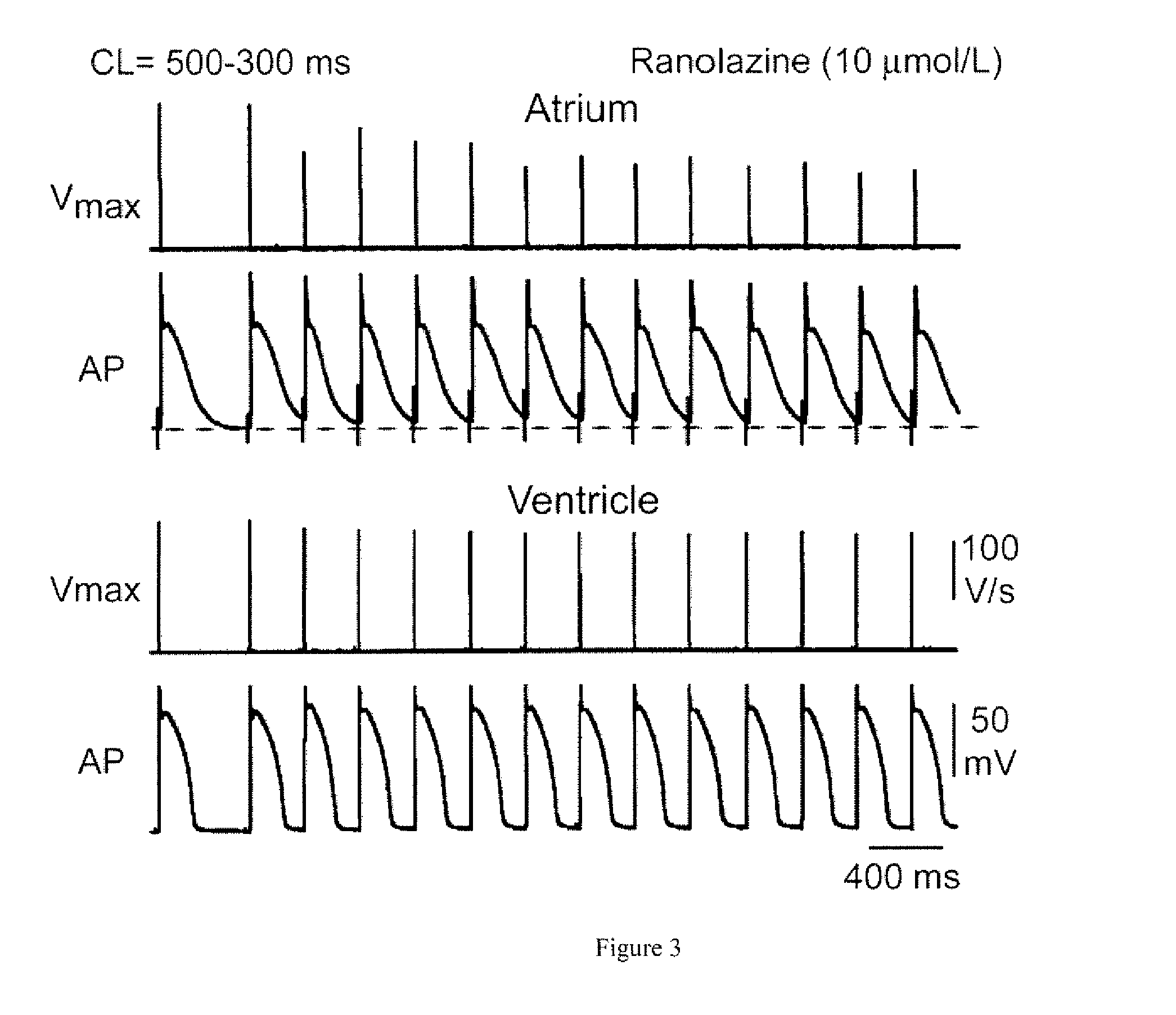Method of treating atrial fibrillation
a technology of atrial fibrillation and atrial fibrillation, which is applied in the field of atrial fibrillation treatment, can solve the problems of heart failure, heart failure, and palpitations or chest pain, and achieve the effect of prolonging the repolarization of ap and positive take-off potential
- Summary
- Abstract
- Description
- Claims
- Application Information
AI Technical Summary
Benefits of technology
Problems solved by technology
Method used
Image
Examples
example 1
Atrium-Selective Sodium Channel Block as a Novel Strategy for the Management of AF
Background
[0059]The development of selective atrial antiarrhythmic agents is a current strategy for suppression of atrial fibrillation (AF). The present example teaches that sodium channel characteristics differ between atrial and ventricular cells and that atrium selective sodium channel block is another effective strategy for the management of AF
Methods and Results
[0060]Whole-cell patch clamp techniques were used to evaluate inactivation of peak sodium channel current (INa) in myocytes isolated from canine atria and ventricles. The electrophysiological effects of therapeutic concentrations of ranolazine (1 to 10μmol / L) and lidocaine (2.1 to 21 μmol / L) were evaluated in canine isolated coronary-perfused atrial and ventricular preparations. The half-inactivation voltage of INa was 15 mV more negative in atrial versus ventricular cells under control conditions; this difference was increased after exposu...
example 2
Atrial Selectivity of Ranolazine to Produce Use-Dependent Block of Sodium Channels Leading to Suppression of AF
Background
[0062]Antiarrhythmic drug therapy remains the principal approach for suppression of atrial fibrillation (AF) and flutter (AFl) and their recurrences. Among the current strategies for suppression of AF / AFl is the development of antiarrhythmic agents that preferentially affect atrial, rather than ventricular electrical parameters. Inhibition of the ultrarapid delayed rectifier potassium current (IKur), present in atria but not in ventricles, is an example of an atrial-selective approach (Nattel et. al. Circulation. 2000;101:1179-1184.) We recently examined the hypothesis that sodium channel characteristics differ between atrial and ventricular cells and that atrial-selective sodium channel block is another effective strategy for the management of AF (Burashnikov et al. Circulation 2007;116:1449-1457 and Burashnikov et al. Heart Rhythm 2007;4:S163).
[0063]Biophysical ...
example 3
Combined Treatment with Ranolazine and Amiodarone
[0087]Ranolazine (RAN) is an antianginal agent recently shown to possess antiarrhythmic activity in ventricular and atrial myocytes, including pulmonary vein (PV) sleeve preparations. Chronic amiodarone (Amio) is commonly used for the treatment of supraventricular and ventricular arrhythmias, including atrial fibrillation (AF). Delayed afterdepolarizations (DADs) and late phase 3 early afterdepolarizations (EADs), originating from PV sleeves, have been proposed as potential triggers in the initiation of AF. This study was designed to evaluate the electrophysiologic and antiarrhythmic effects of ranolazine in superfused PV sleeve preparations isolated from dogs treated with chronic Amio (6 weeks, 40 mg / kg daily).
Methods:
[0088]Action potentials (AP) were recorded from canine superfused PV sleeves using microelectrode techniques. Acetylcholine (ACh, 1 μM), isoproterenol (Iso, 1 μM), or their combination was used to induce EADs, DADs, and...
PUM
| Property | Measurement | Unit |
|---|---|---|
| weight | aaaaa | aaaaa |
| weight | aaaaa | aaaaa |
| concentration | aaaaa | aaaaa |
Abstract
Description
Claims
Application Information
 Login to View More
Login to View More - R&D
- Intellectual Property
- Life Sciences
- Materials
- Tech Scout
- Unparalleled Data Quality
- Higher Quality Content
- 60% Fewer Hallucinations
Browse by: Latest US Patents, China's latest patents, Technical Efficacy Thesaurus, Application Domain, Technology Topic, Popular Technical Reports.
© 2025 PatSnap. All rights reserved.Legal|Privacy policy|Modern Slavery Act Transparency Statement|Sitemap|About US| Contact US: help@patsnap.com



